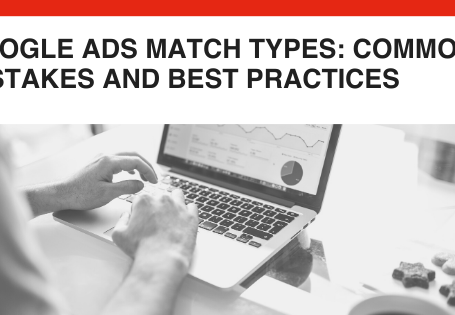Top 8 Tips to Consider When Building Landing Pages
By: Rank Media

Building a campaign from scratch may seem like a daunting task for small businesses, especially if they don’t have adequate internal marketing resources. On the end of the spectrum, bigger companies face the issue of resource allocation when it comes to developing creative assets for new campaigns. Navigating through an endless stream of emails and requests can lead to significant delays in production. In most cases, working with an experienced agency that specializes in conversion optimization can prevent businesses from developing landing pages that will not be ready for future media buying campaigns. However, if that’s not an option and you need to build out landing pages internally, here are the top 8 things to consider when creating a new landing page.
Whether you decide to outsource the development of landing pages or handle creative design internally, here are eight important tips to consider when building out landing pages.
#1. Add the right amount of content
While you should create your landing pages with the purpose of pushing users through the conversion funnel in as few steps as possible, you need to ensure there is enough content on the page to educate users. If Google AdWords is at the center of your media buying strategy, adding relevant ad copy may be essential to increasing your quality score and building up your landing page relevance. If you are pushing traffic from a long-form post on LinkedIn to a particular landing page targeting high-level CEO’s, being thin on content may be more efficient than writing an essay about your services. Fully understand your target audience and the path users are taking to reach your landing page when developing your content strategy.
#2. Make your landing page mobile responsive
For those of you that have read my blog posts before, you will be familiar with my diatribes and rants chastising businesses that have not yet adopted a mobile-first experience for users. With an increasing number of users accessing web pages via mobile devices, it would be outright reckless to invest resources into custom design and development without considering the mobile experience. Common issues you want to prevent users from encountering include:
- Hidden calls to action
- Overlapping text
- Overly complicated web forms
#3. Optimize your landing pages for conversions
Unfortunately, a myriad of businesses will end up wasting thousands of dollars on misguided campaigns because they do not focus on how to best capture lead information. For example, if your business thrives on closing inbound calls because the leads are fresher than form submissions, why would you make it difficult for users to initiate a call from mobile devices? On the other hand, if data leads tend to convert better and you don’t have the sales staff to handle an influx of inbound calls, why would you make it difficult for users to complete web forms? Always think of the ultimate conversion points on your landing pages and make it easy for users to contact your business. With regards to phone numbers on landing pages, always make them clickable on mobile devices. It’s a shame how many companies are exhausting budgets on media buying campaigns where mobile traffic cannot initiate a phone call without switching apps. As for lead generation forms, don’t ask for too much information from users off the bat. In some cases, having too many form fields adds a barrier on your landing page, leading to fewer conversions. Only collect pertinent information that will help you close inbound leads.
#4: Use testimonials and social proof
When it comes to buying products online or visiting local establishments, users will seek out social proof in the form of testimonials and reviews to make a final decision. In other cases, glowing testimonials can help reinforce positive attitudes towards brands and businesses. You should adopt the same mentality when it comes to developing landing pages. Incorporating testimonials from satisfied customers can go a long way to instilling confidence in your target audience and assist in moving users along the conversion funnel. However, if your business has a dearth of testimonials, please tread lightly and don’t prop up fake reviews and stock images to compensate. Users are seeking out companies that are authentic, and by employing the use of deceitful testimonials, you’re giving your target audience a reason to doubt your business from the beginning. Fake testimonials are easy to identify and hurt your business more than help it in the long run.
#5: Use trust symbols and brand elements
This tip goes hand-in-hand with #4. While testimonials provide an element of social proof, trust symbols help reinforce the legitimacy of your business. What exactly are “trust symbols”? Trust symbols are seals and badges implanted on websites that indicate sensitive information is secure and validated by an external source. Trust symbols can include:
- Better Business Bureau badge
- Security Symbols (Norton, TRUSTe, McAfee, etc.)
In other cases, using well-known brand logos can help reinforce the authenticity of your business. For example, if you’re an insurance broker and sell plans on behalf of public insurance providers, adding their logos on your landing page will inform users that you sell plans on their behalf. In our case, we like to make use of the Google Premier Partner badge, on our website and creatives, indicating that we manage high-level Google AdWords accounts, giving us an edge over the competition.
#6: Use videos to tell your story
There’s a reason why the usage of videos on social media platforms yields higher engagement rates than posts without them. Videos are interactive and help convey your message in a simpler and quicker manner than standard text or images. However, don’t be too reliant on videos to convert inbound traffic. If users are interested in your business before visiting your landing page, pushing videos to the forefront may be asking too much of your target audience and scare traffic away. Of course, if you can leverage any existing video assets that can assist in the selling process, incorporate them into your landing page.
#7: Match content to imagery
The statement above may seem like a simple tip, but it’s not uncommon for businesses to use multimedia that doesn’t correspond with the main ad copy. The issue above typically arises due to a disconnect between creative design and content writing, which you can avoid with strategic planning in the initial stages. If the overall tone of your content and messaging is uplifting, the corresponding imagery should blend seamlessly by showcasing happy people. On the other hand, if you’re utilizing elements of fear to encourage users to take action, employing imagery with happy people is not the best course of action. While you don’t want to depress users utterly, somber landing pages require a melancholic touch not to make light of a serious situation.
#8: Implement conversion tracking
How can you accurately gauge the return on investment of a campaign if you’re unable to calculate your cost-per-lead and cost-per-acquisition metrics? Mastering the world of analytics may seem like a daunting task for small businesses, but taking the extra time to implement conversion tracking and staying on top of reporting can make or break campaigns. For example, if you spend $5,000 in one month and don’t track where leads are coming from, you may be overestimating the success of individual campaigns if you attribute all new business to media buying. Digging through the data will not only allow you to calculate the metrics referenced above, but it will also give you the opportunity to optimize campaigns and your landing pages in the future.
On that note, be sure to integrate any and all remarketing pixels on your landing page and your website. Installing remarketing pixels on your web properties will help you with developing more sophisticated media buying campaigns in the future for remarketing and funnel marketing campaigns.
Tying it all together
There’s no such thing as building the perfect landing page. There will always be room for improvement, especially when you start to accumulate data and understand what converts best. Utilizing landing page software such as Unbounce or Lead Pages can help you build A/B or multivariate tests quickly without the need to code new landing pages from scratch. However, lending on the expertise of agencies that specialize in split-testing and conversion optimization can be a worthwhile investment, as they will guide you on what elements to test and track the data to optimize the creative assets even further. Regardless of whether you choose to build landing pages internally or outsource to a contractor, be sure to follow the eight tips laid out in this blog post to maximize your ability to generate conversion and make your media buying more efficient.







 (800) 915 7990
(800) 915 7990
